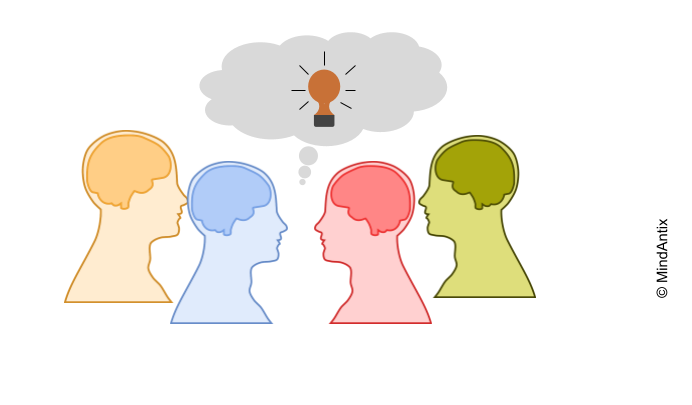As a child, Isaac spoke little and had trouble reacting appropriately in social situations. He found it hard to form friendships and preferred to spend time alone. He lacked the ability to understand the motives of others’ and was prone to having angry outbursts.
If you saw signs of autism in the description, you are probably right. But you might be surprised to know that Isaac grew up to have a successful career. Isaac, as in Isaac Newton, laid the foundations of classical mechanics, made significant contributions to optics and even developed Calculus!
Simon Baron Cohen, psychologist at the University of Cambridge, believes that scientists like Newton and Einstein likely had Asperger’s syndrome (a high functioning variant of Autism Spectrum Disorder).
If Newton was indeed on the spectrum, did his condition help him or hurt him in his intellectual pursuits?
A growing area of research, Neurodiversity, shows that some of the common neurological conditions actually help in certain situations and may have evolutionary advantages.
Recent research has found that disorders like autism, ADHD and Dyslexia can be beneficial when it comes to creative thinking, a skill that is becoming increasingly important. We certainly see some evidence of that in our work with our diverse student population.
Autism Spectrum Disorder (ASD)
Autism is primarily characterized with challenges in social relationships and deficits in the “theory of mind”.
However, Scott Barry Kaufman, author and professor at University of Pennsylvania, explains that people with ASD do care about others and desire connection – they just do it differently. As he writes, “Perhaps instead of viewing people with ASD as “socially awkward” individuals who need to be “fixed,” we should instead conceptualize them as socially creative. They may not do things the “right” way, but they do them their way.”
Outside of social situations, people with ASD have show differences in cognitive creative thinking. For instance, in divergent thinking tasks, people with ASD produce fewer but more original ideas. Contrast this with the conventional guideline of “one needs to generate lots of ideas to get to the more unique ones“. Since the goal of brainstorming is to end up with creative ideas, autism seems to confer some efficiency in this process.
Attention Deficit Hyperactive Disorder (ADHD)
ADHD is characterized by three key groups of symptoms: hyperactivity, impulsivity and distractibility. But these same traits are also helpful in some tasks.
Bonnie Cramond, director at the Torrance Center for Creativity and Talent Development at the University of Georgia, found that the set of traits used to identify ADHD were nearly identical to the set of traits for creative people.
Recent research has also confirmed the link between ADHD and Creativity. The part of the brain known as the Default Network or the Imagination Network, becomes active during the passive or rest phase and plays a crucial role in creative thinking. In people with ADHD, the brain structure responsible for filtering data from the Imagination Network is “leaky” leading to a more diffused attention style along with more creative thoughts. As Prof. Kaufman explains, “Both creative thinkers and people with ADHD show difficulty suppressing brain activity coming from the “Imagination Network.””
Dyslexia
Dyslexia is a reading disorder characterized by difficulty with reading, writing, spelling and grammar, and affects from 5 to 20 percent of all school children.
In dyslexic readers brain areas (in the left hemisphere) used in recognizing letters and words, and in sounding out words are under-activated but the parts of the right hemisphere become more active to compensate. That might explain why dyslexics are better at visual spatial skills, out-of-box thinking and holistic perception – skills useful in creative and entrepreneurial work.
In a survey sent to entrepreneurs and corporate managers, Julie Logan, professor of entrepreneurship at Cass Business School in London, found that 35% of entrepreneurs identified themselves as dyslexic compared to only 1% of corporate managers. Richard Branson, one of most famous dyslexic entrepreneur, has often commented that far from being a disability, dyslexia has been his biggest business advantage.
To clarify, in highlighting the strengths associated with these disorders we do not intend to trivialize the challenges faced in more severe forms of these disabilities. We hope that by understanding the cognitive strengths that accompany these conditions, we can create better environments for different neurotypes to work together and be productive. As Thomas Armstrong says in his book, Neurodiversity, “diversity among brains is just as wonderfully enriching as biodiversity and the diversity among cultures and races.”

